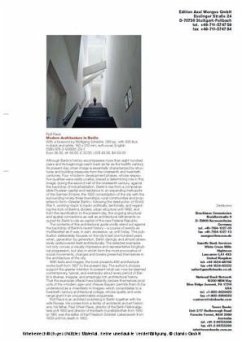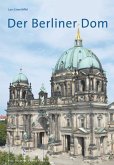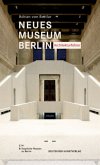Although Berlin's history encompasses morethan eight hundred years and its beginningsreach back as far as the 12th century, its present-day urban image is essentially characterizedby structures and building measures fromthe nineteenth and twentieth centuries. Four'modern' development phases, whose respectivequalities were vastly unalike, played a determiningrole in this image: during the second halfof the 19th century, against the backdrop of industrialization,Berlin's rise from a comprehensiblePrussian capital and residence to an expandingmetropolis of the German Empire; the1920 consolidation of the city with the surrounding93 townships, rural communities, and propertiesto form 'Greater Berlin'; following thedestruction of World War II, working 'back toback' politically, territorially, and regarding thelook of Berlin's divided, urban structure until1990; and from the reunification to the presentday, the ongoing structural and spatial connectionsas well as architectural refinements requiredfor Berlin's role as capital of the newFederal Republic.The contents of this architectural guide vividlystand out against the backdrop of Berlin's recenthistory - a course of events as multifacetedas it was, in part, excessive, up until today. Thispublication deliberately focuses on the city's last100 years when, generation by generation, Berlindaringly and almost obsessively rediscovereditself architecturally. The selected examples notonly convey a visually impressive and representativelongitudinal progression, but also in whichform the most provocative of social movements,changes and breaks presented themselves inthe architecture of the city.With texts and images, the book presents466 architectural works built from 1907 to thepresent day. The author's choices support thegreater intention to present what can now bedeemed contemporary, typical and exemplaryabout every period of Berlin's diverse, irregular,and amazingly rich architectural history. Thatthe examples offered here blatantly declarethemselves products of the 'modern age' and'Neues Bauen' permits them to be understoodas a 'manifesto in images' which consolidatesto a 20th-century architectural collage, whosequality and wide range grant it an unquestionableuniqueness.Rolf Rave is an architect practising in Berlintogether with his wife Roosje. He comes from afamily of architects and art historians; his father,Paul Ortwin Rave, director of the Berlin Nationalgalerieuntil 1950 and director of the Berlin Kunstbibliothekfrom 1950 to 1961, was the editor ofKarl Friedrich Schinkel. Lebenswerk from 1939until his death in 1962.
Hinweis: Dieser Artikel kann nur an eine deutsche Lieferadresse ausgeliefert werden.
Hinweis: Dieser Artikel kann nur an eine deutsche Lieferadresse ausgeliefert werden.







